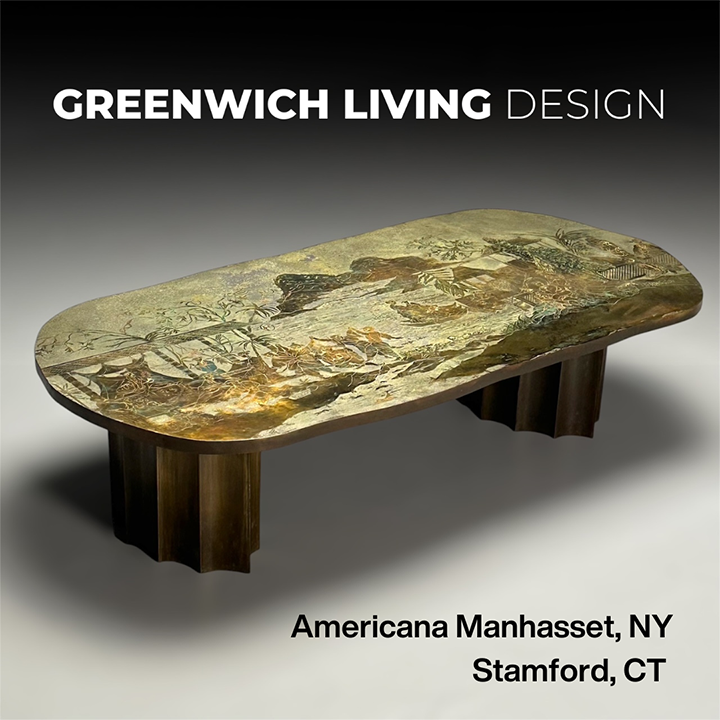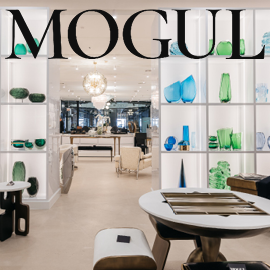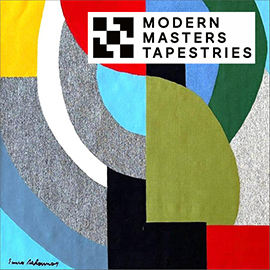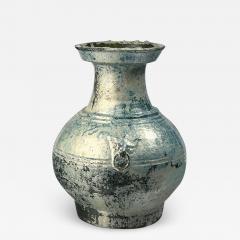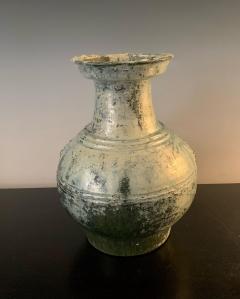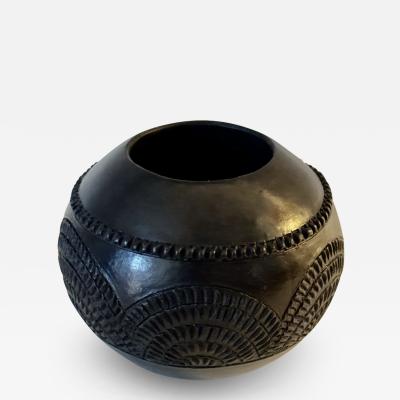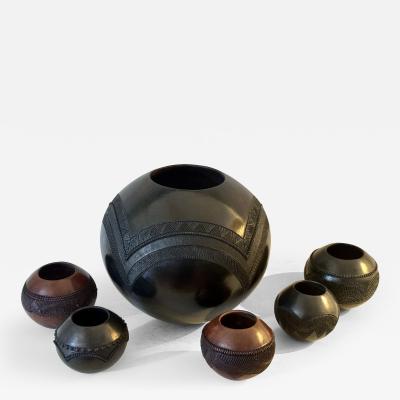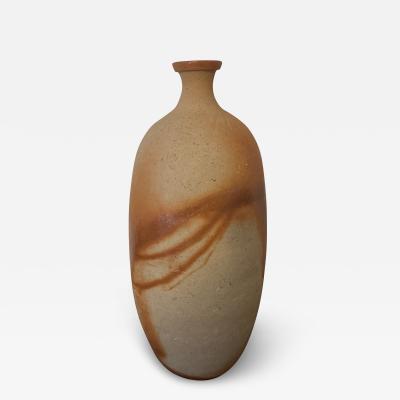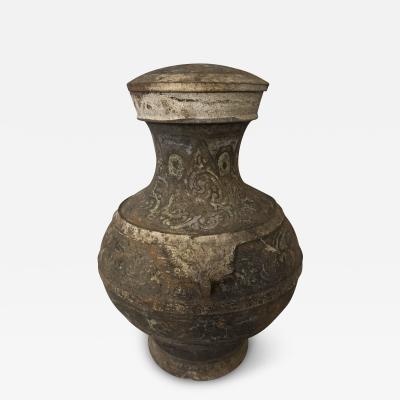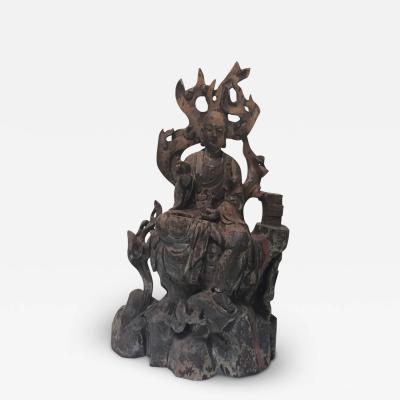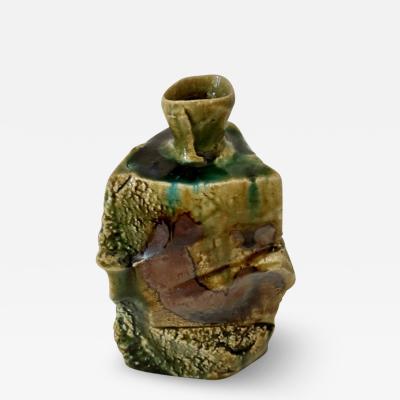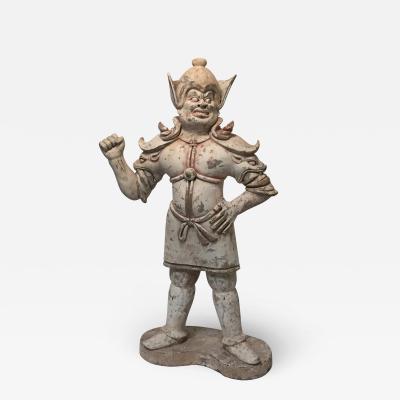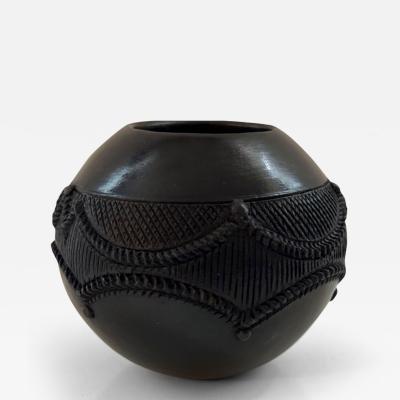Han Dynasty Glazed Jar (HU)
-
Description
Pottery vase of hu shape
China, Eastern Han dynasty, 25 - 220 AD
A pottery vase of baluster shape, the heavily potted body support ed on a flat base, which has three wedge-shaped spurs. The neck is waisted and has a widely flared rim that terminates in a cup-shaped mouth. The body is decorated with bands of ridged lines and is moulded with two mock taotie mask handles. The exterior of the vase, including the base, is covered in a lustrous green glaze, which has gone almost completely silvery iridescent.
The shape of this vase imitates that of a contemporary bronze.[1] The iridescence of the glaze is caused by damp burial soil reacting with the metal content in the glaze, in this case lead. In the catalogue of the Meiyintang collection Krahl states that, during the Han dynasty, tombs were often looted and that expensive materials such as bronze were therefore gradually substituted by cheaper materials, such as pottery. She also points out that the poisonous lead content in the glaze would have made pieces such as this unsuitable for storage of food and drink.[2] A comparable, larger vase, also almost completely covered in an iridescent lead glaze, is in the Meiyintang collection.[3] -
More Information
Origin: China Period: Pre 18th Century Materials: Clay Condition: Good. In excellent condition with no known condition issues Creation Date: 206 B.C. - 220 A.D. Styles / Movements: Asian, Traditional, Ancient Art Patterns: Asian/Oriental Incollect Reference #: 547898 -
Dimensions
W. 10 in; H. 12 in; W. 25.4 cm; H. 30.48 cm;
Message from Seller:
J R Richards has over 23 years of experience in the Ceramic Arts, specializing in Ancient and Contemporary Asian Ceramics, with a focus on Chinese, Japanese, and Korean pottery. Based in Los Angeles, J R Richards curates rare and high-quality pieces for discerning collectors and interior designers, showcasing them at major art fairs such as the San Francisco Fall Antiques Show and New York Asia Week. | joey@joeyrichards.com
Sold




